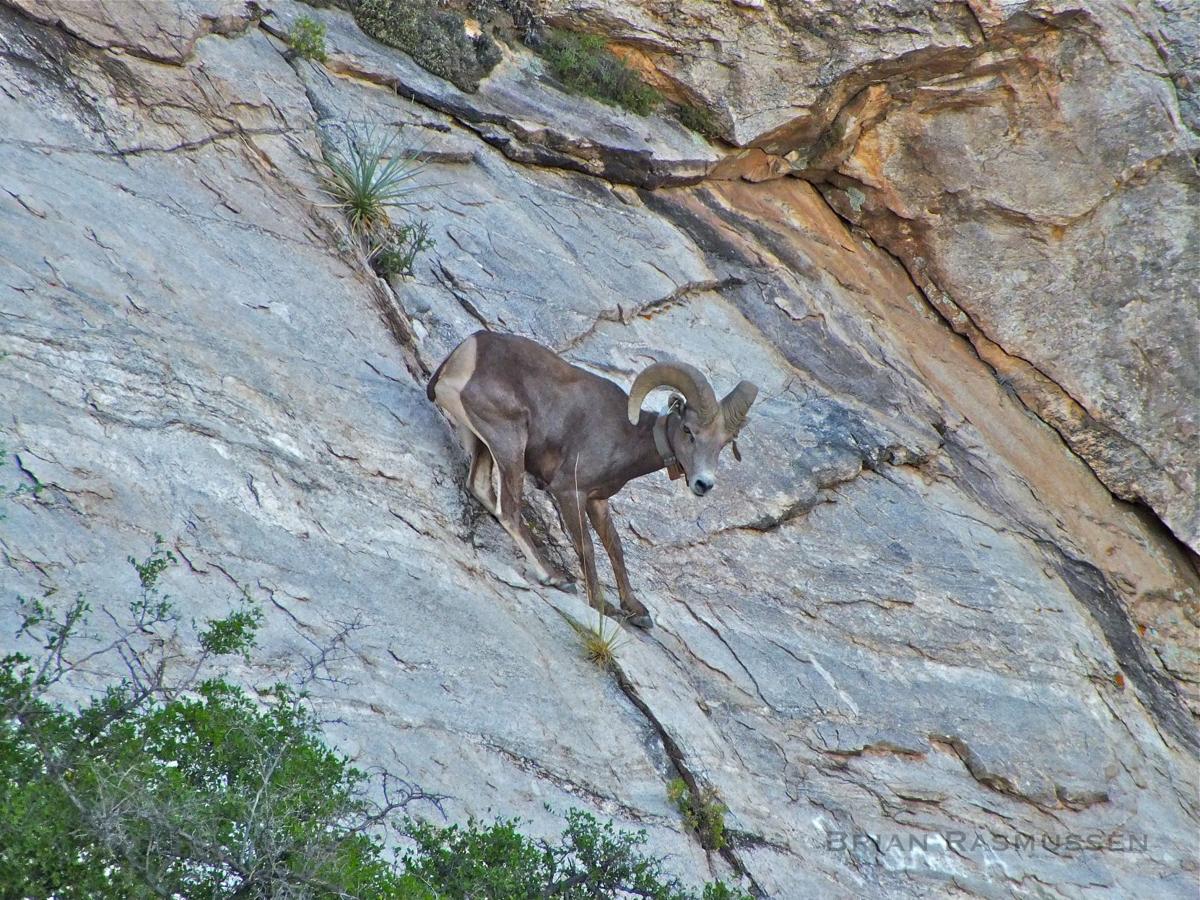A bighorn ewe has been found dead in the Catalina Mountains north of Tucson — the first known bighorn mortality in the range in more than three months.
The ewe’s GPS collar sent a mortality signal on Aug. 30, and the animal’s carcass was discovered on Aug. 31 with no obvious injuries, according to a report by the Arizona Game and Fish Department. The agency is overseeing an effort to rebuild a bighorn herd that disappeared from the Catalinas in the 1990s.
“The remains were so badly decomposed that they couldn’t be submitted for laboratory analysis” to test for possible disease, said Mark Hart, a spokesman for the department. “But it was determined that the sheep had not been killed by a mountain lion.”
Game and Fish reported last week that there had been no known bighorn deaths in the Catalinas since May 21, and Hart said the reintroduction project would be declared a success if an upcoming survey of the herd finds 70 or more bighorns.
Thirty-five collared sheep are known to be alive in the range following the most recent death. Hart noted that the potential total population could be 80 because there might be as many as 45 uncollared sheep. That estimate includes animals that were released without GPS tracking collars, those whose collars have dropped off, and those born in the Catalinas.
An aerial and ground survey of bighorns in the range will probably be conducted in late September, Hart said.





